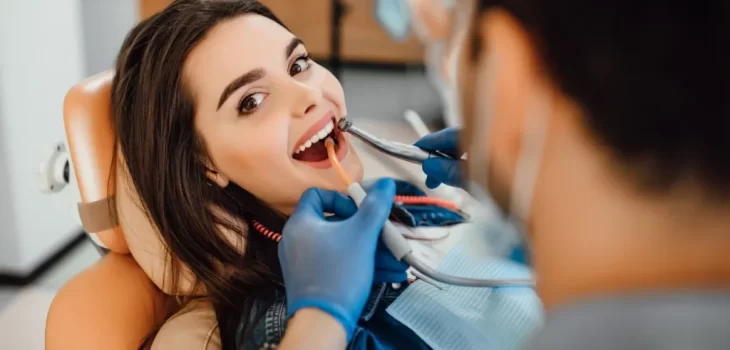 Health
Health
Cracked, Chipped, or Missing Teeth? Restorative Solutions Explained
- by Kevin Smith
Life happens—and sometimes, so do dental issues. Whether it’s a small chip from biting something hard, a cracked tooth from an accident, or a tooth that’s missing altogether, these problems can impact both your confidence and oral health. The good news? Dental restorative services offer a variety of solutions to repair damage and restore your smile.
Let’s break down the most common dental issues and how modern restorative treatments can fix them.
1. Chipped Teeth: Small Damage, Big Fix
Chipped teeth are one of the most common dental injuries. You might chip a tooth from biting down on ice, grinding your teeth at night, or taking a hit while playing sports. Even a small chip can weaken your tooth and affect your smile.
Restorative Options for Chipped Teeth:
- Dental Bonding: For minor chips, your dentist can apply tooth-colored resin to the affected area, reshape it, and harden it with a special light. It’s quick, affordable, and looks natural.
- Veneers: If the chip is on a front tooth, a porcelain veneer may be used to cover the entire surface, improving both the tooth’s strength and appearance.
- Crowns: Larger chips that comprise a tooth’s structure may require a dental crown, which covers the entire tooth and provides long-term protection.
2. Cracked Teeth: More Than Just a Cosmetic Problem
Cracks in teeth can result from injury, pressure from teeth grinding (bruxism), or even biting into hard foods. Some cracks are visible, others aren’t—but they can still cause pain and sensitivity when chewing.
Restorative Options for Cracked Teeth:
- Dental Crowns: A crown can cap a cracked tooth and hold it together, preventing further damage and protecting the inner tooth pulp.
- Root Canal Therapy: If the crack has extended into the pulp (the soft center of the tooth), a root canal may be needed to remove infected tissue before placing a crown.
- Extraction and Replacement: In severe cases, if the crack goes below the gum line, the tooth may need to be removed and replaced with a bridge or dental implant.
3. Missing Teeth: Aesthetic and Functional Fixes
Missing teeth not only impact your appearance but can also make chewing and speaking more difficult. Plus, gaps can cause neighboring teeth to shift out of place, leading to bite issues or jaw problems.
Restorative Options for Missing Teeth:
- Dental Implants: Considered the gold standard for tooth replacement, implants are artificial tooth roots placed into the jawbone, topped with a crown. They look, feel, and function like natural teeth.
- Bridges: A dental bridge is used to fill the space left by one or more missing teeth. It’s anchored to the adjacent teeth or implants.
- Dentures: For multiple missing teeth, partial or full dentures can be an affordable solution. Today’s dentures are more comfortable and natural-looking than ever before.
Why Timely Treatment Matters
Ignoring a cracked, chipped, or missing tooth can lead to more serious problems. A small chip can grow, a cracked tooth can become infected, and a missing tooth can lead to bone loss in the jaw. Early treatment not only preserves your natural teeth but can also save you time and money in the long run.
The Role of Restorative Dentistry in Your Smile Health
Restorative dentistry isn’t just about fixing what’s broken—it’s about restoring your oral health, function, and confidence. Whether your dental issue is cosmetic or structural, your dentist can recommend the best solution based on your needs and goals.
Most importantly, restorative procedures are done with your comfort in mind. Many treatments today are quick, minimally invasive, and virtually pain-free thanks to modern technology. I would like you to search for the best and affordable dental services to get the best results at pocket friendly prices.
Final Thoughts
Chipped or lost a tooth? You don’t have to live with dental damage. Restorative dentistry offers reliable and effective services to get your smile—and your confidence—back.
If you’re dealing with a dental issue, don’t wait. Visit your dentist, discuss your options, and take the first step toward a healthier, happier smile.









